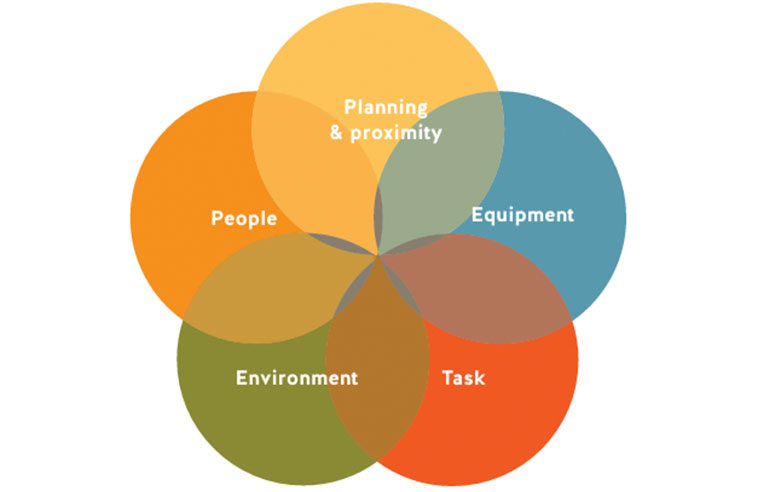New fact sheet, other materials aimed at preventing struck-by injuries

Vancouver, British Columbia — Protecting workers from struck-by injuries related to heavy equipment or vehicles is the goal of new employer-aimed resources from the Workers’ Compensation Board of British Columbia.
WorkSafe BC offers a fact sheet and info sheet, as well as a template to identify possible hazardous areas on a jobsite. The agency identifies five factors that contribute to the risk of struck-by incidents involving vehicles and mobile equipment, such as forklifts, excavators, trucks and graders:
- Planning and proximity
- Equipment
- Task
- Environment
- People
WorkSafe BC says such work may be hazardous in part because workers “cannot consistently notice, see, hear and respond to all changes around them.” The agency calls on employers to be mindful of issues such as traffic, vehicle condition, work goals and site layout before and during work.
The template includes a guide that encourages employers to identify and control risks by following a four-step process:
- Draw the layout of your worksite.
- Circle work areas where vehicles and mobile equipment operate near workers on foot.
- Describe the task and factors. Each task breakdown should answer the question, “Why are workers near vehicles or mobile equipment when completing this task?”
- Determine and implement effective controls from the Hierarchy of Controls.
“Managing your worksite’s risks is an ongoing process,” WorkSafe BC says. “You’ll need to monitor the effectiveness of the control measures in place and improve those that are not effectively reducing vehicle and worker interactions.”
Post a comment to this article
Safety+Health welcomes comments that promote respectful dialogue. Please stay on topic. Comments that contain personal attacks, profanity or abusive language – or those aggressively promoting products or services – will be removed. We reserve the right to determine which comments violate our comment policy. (Anonymous comments are welcome; merely skip the “name” field in the comment box. An email address is required but will not be included with your comment.)

